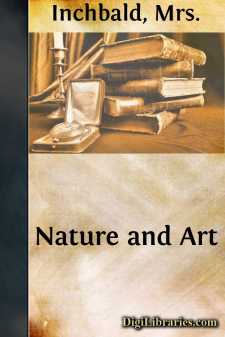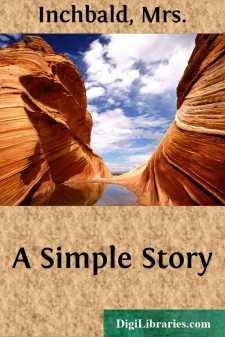Categories
- Antiques & Collectibles 13
- Architecture 36
- Art 48
- Bibles 22
- Biography & Autobiography 813
- Body, Mind & Spirit 142
- Business & Economics 28
- Children's Books 17
- Children's Fiction 14
- Computers 4
- Cooking 94
- Crafts & Hobbies 4
- Drama 346
- Education 46
- Family & Relationships 57
- Fiction 11829
- Games 19
- Gardening 17
- Health & Fitness 34
- History 1377
- House & Home 1
- Humor 147
- Juvenile Fiction 1873
- Juvenile Nonfiction 202
- Language Arts & Disciplines 88
- Law 16
- Literary Collections 686
- Literary Criticism 179
- Mathematics 13
- Medical 41
- Music 40
- Nature 179
- Non-Classifiable 1768
- Performing Arts 7
- Periodicals 1453
- Philosophy 64
- Photography 2
- Poetry 896
- Political Science 203
- Psychology 42
- Reference 154
- Religion 513
- Science 126
- Self-Help 84
- Social Science 81
- Sports & Recreation 34
- Study Aids 3
- Technology & Engineering 59
- Transportation 23
- Travel 463
- True Crime 29
Nature and Art
by: Mrs. Inchbald
Categories:
Description:
Excerpt
INTRODUCTION
Elizabeth Simpson was born on the 15th of October, 1753, one of the eight children of a poor farmer, at Standingfield, near Bury St. Edmunds. Five of the children were girls, who were all gifted with personal beauty. The family was Roman Catholic. The mother had a delight in visits to the Bury Theatre, and took, when she could, her children to the play. One of her sons became an actor, and her daughter Elizabeth offered herself at eighteen—her father then being dead—for engagement as an actress at the Norwich Theatre. She had an impediment of speech, and she was not engaged; but in the following year, leaving behind an affectionate letter to her mother, she stole away from Standingfield, and made a bold plunge into the unknown world of London, where she had friends, upon whose help she relied. Her friends happened to be in Wales, and she had some troubles to go through before she found a home in the house of a sister, who had married a poor tailor. About two months after she had left Standingfield she married, in London, Mr. Inchbald, an actor, who had paid his addresses to her when she was at home, and who was also a Roman Catholic. On the evening of the wedding day the bride, who had not yet succeeded in obtaining an engagement, went to the play, and saw the bridegroom play the part of Mr. Oakley in the “Jealous Wife.” Mr. Inchbald was thirty-seven years old, and had sons by a former marriage. In September, 1772, Mrs. Inchbald tried her fortune on the stage by playing Cordelia to her husband’s Lear. Beauty alone could not assure success. The impediment in speech made it impossible for Mrs. Inchbald to succeed greatly as an actress. She was unable to realise her own conceptions. At times she and her husband prospered so little that on one day their dinner was of turnips, pulled and eaten in a field, and sometimes there was no dinner at all. But better days presently followed; first acquaintance of Mrs. Inchbald with Mrs. Siddons grew to a strong friendship, and this extended to the other members of the Kemble family.
After seven years of happy but childless marriage, Mrs. Inchbald was left a widow at the age of twenty-six. In after years, when devoting herself to the baby of one of her landladies, she wrote to a friend,—“I shall never again have patience with a mother who complains of anything but the loss of her children; so no complaints when you see me again. Remember, you have had two children, and I never had one.” After her husband’s death, Mrs. Inchbald’s beauty surrounded her with admirers, some of them rich, but she did not marry again. To one of those who offered marriage, she replied that her temper was so uncertain that nothing but blind affection in a husband could bear with it. Yet she was patiently living and fighting the world on a weekly salary of about thirty shillings, out of which she helped her poorer sisters. When acting at Edinburgh she spent on herself only eight shillings a week in board and lodging. It was after her husband’s death that Mrs....




